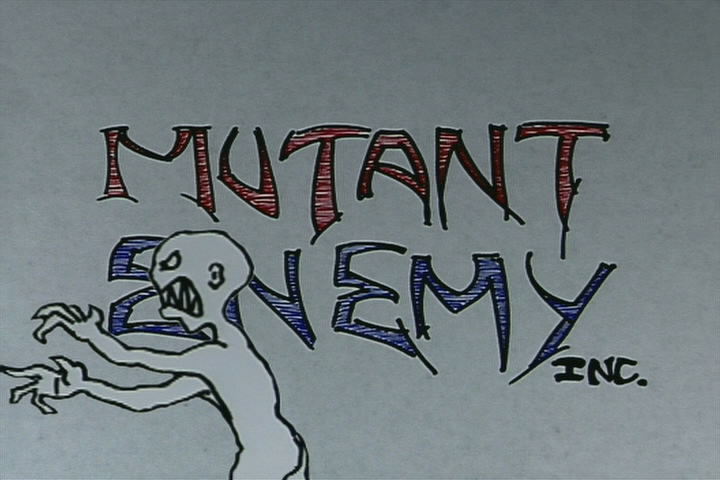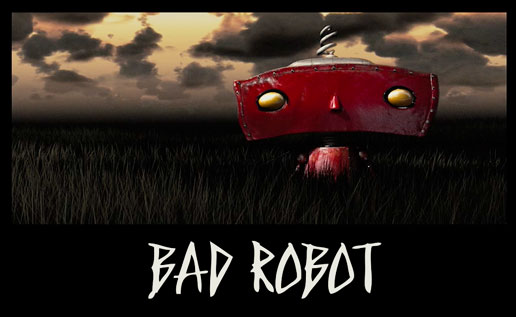THERE IS NO QUESTION that two of the dominant forces in genre television right now are J.J. Abrams and Joss Whedon. Abrams’s Bad Robot company logo lies behind many of the science fiction programs currently on the air, including Revolution, Person of Interest, and Almost Human. Abrams himself is associated with the celebrated series Lost (2004-2010), which seemed single-handedly to reinvent notions of genre on television, and is involved as writer, producer, and director across science fiction more broadly, especially his role in rebooting both Star Trek and Star Wars. Whedon’s Mutant Enemy logo is less widely distributed, currently airing only Agents of S.H.I.E.L.D., but his name is as widely known and more enthusiastically embraced by a loyal cadre of fans who follow his work since television’s Buffy the Vampire Slayer (1997-2003). None of Whedon’s other series achieved quite the same success as Buffy, but its spin-off Angel (1991-2004) made a respectable showing and is regarded by some as a better, more adult treatment their shared theme, the monstrosity of everyday life as literalized metaphor. Whedon was able to complete his vision in media such as comic books, and fan enthusiasm for Firefly (2002-2003) played a significant part in that narrative’s completion in the feature film Serenity (2005).
In addition to creating popular and influential series and films that have shaped the genre through their many imitators, both Abrams and Whedon have pioneered new ways of relating texts to audiences across distribution platforms. Both were among the first to engage with fan communities’ responses to their narratives, and they therefore played key roles in shifting the relationship between industry and fan production toward what Henry Jenkins has described as Convergence Culture (2008). Additionally, in their work across media (from television to film to comics to digital games), both have played significant roles in the creation of transmedia storytelling. Abrams and Whedon have changed the nature of fantastic genres in the twenty-first century and contributed to significant shifts in the overall political economy of popular culture. Yet, despite their similar innovations at this level of form, their influence and legacy is distinct.
Abrams has achieved greater reach in marketing new fantastic modes, but Whedon is more widely praised by critics and fans. Abrams’s work as a producer enables him to create a space for innovative work in the genre beyond titles to which he directly contributes. In contrast, Whedon’s primary identity as a scriptwriter makes his contributions closer to the model of auteur theory in film studies, where his own distinctive voice and vision are central to his influence on the field. So, who would win in a fight between Bad Robot and Mutant Enemy?
 Answering this question really depends on what we mean by win. Certainly in terms of volume, Bad Robot comes out ahead, with three series on television compared to Mutant Enemy’s one. In terms of quality, judging by the current television season alone, things seem fairly evenly matched.
Answering this question really depends on what we mean by win. Certainly in terms of volume, Bad Robot comes out ahead, with three series on television compared to Mutant Enemy’s one. In terms of quality, judging by the current television season alone, things seem fairly evenly matched.
Revolution is proving to be a much more interesting series this year than last, and its ability to reinvent and reshape itself in this way is distinctive of Abrams’s innovations, epitomized by the cult hit Lost that changed from a scripted version of Survivor, to political conspiracy thriller, to fantasized mythology, to science fiction time travel across its six seasons, sometimes mid-episode. A mysterious force is also at work in Revolution, just as Lost’s Island had its godlike beings, but Revolution seems less inclined to alter its mythology on the fly, and has a better rationale for it in the first place in nanotech AI, and so the strengths of this series are perhaps a reflection of an alchemical balance between Abrams’s whimsy and co-creator Eric Kripke’s steady hand. Kripke’s previous success was with Supernatural (2005) a huge fan favorite poised to be renewed for a 10th season, although its narrative has become rather strained in recent seasons. How many times can Sam and Dean turn on one another, then reconcile, go to hell, then come back? As many as the market will bear, it seems, and Kripke had the good sense to distance himself after the resolution of a planned five-year narrative arc that gave a satisfying shape to their story.
Almost Human, created by Abrams’s protégé J.H. Wyman, seems the most banal of current Bad Robot offerings, despite good performances from series regulars Karl Urban and Michael Ealy. There is nothing particularly wrong with Almost Human but there is nothing particularly right either. As I’ve covered before, its premise is not particularly innovative, and while it has a sleek new look, with Minority Report-esque digital IT interfaces, its plots are banal: cop drama treatments of the future tech whose legal and social consequences are explored in James Woods’s non-fictional Futurescapes (2013-) airing on the Science Channel. Almost Human is all cool surface with very little substance: it remains to be seen if such a vision will nonetheless achieve market success, but the numbers suggest that this series will go to a deserved early grave.
Person of Interest is funded by Bad Robot, but created by Jonathan Nolan, and so it is perhaps unfair to include it in this exercise since Nolan’s own distinctive vision, evident in his screenplays for the Dark Knight films directed by his brother Chris, shapes this series. Person of Interest is one of the best science fiction programs on television today, and if nothing else speaks to Bad Robot’s important role in ensuring talented people have the opportunity to bring their visions to the screen. Person of Interest loses a lot of points in my tally, however, for its mid-season finale that killed off its only person of color in the regular cast, Detective Carter, played by Taraji P. Henson. Although Henson insists, “it’s not like that,” in fact, it is: too many science fiction television programs have already followed this pattern, and Bad Robot is one of the offenders (i.e., Lost).
The only Mutant Enemy contender in the current lineup, Agents of S.H.I.E.L.D., has not had the strongest showing this season, but ensemble casts and long narrative arcs, Whedon’s distinctive traits, take some time. Predictions are that, despite an uneven start, this series will be renewed, and it is in second seasons that Mutant Enemy productions shine. Unlike earlier series, this one is not substantially written by Joss Whedon, whose role as creator is closer to Abrams’s in a number of his projects. This may be to the show’s detriment, but so far seems to have meant that people blame the series’ shortcoming on his distance. The mid-season finale displayed some of the distinctive Joss Whedon charm, rehabilitating J. August Richards’s character Mike Petersen from the pilot and promising further developments in the mystery of what lies behind Agent Coulson’s (Clark Gregg) otherwise too-easy resurrection. The series loses some points for Coulson and Agent Ward’s (Brett Dalton) banter about the puzzle that is woman, although it gains some back when May (Ming-Na Wen) later yells at Ward for presuming to take a punch for her. And Agent Ward seems more like a network-note character than a Whedon character in any case.
So my vote for most interesting mid-season finale and most promising series goes to Mutant Enemy. But the political economy of television may have more reasons to give the nod to Bad Robot. Whedon’s fights with network executives to make his series according to his vision are notorious and his work has been plagued by early cancellations. Abrams, in contrast, seems to have the golden touch when it comes to renewals. Yet, for all its acclaim and massive audience while on the air, Lost is already drifting into television history. Buffy the Vampire Slayer, in contrast, remains a fan and convention favorite, current airs on Spike TV, and continues to be embraced by new generations of young viewers even though its series finale aired over a decade ago.
Thus, while Bad Robot comes out ahead in quantity, Mutant Enemy has the edge in longevity.
¤


